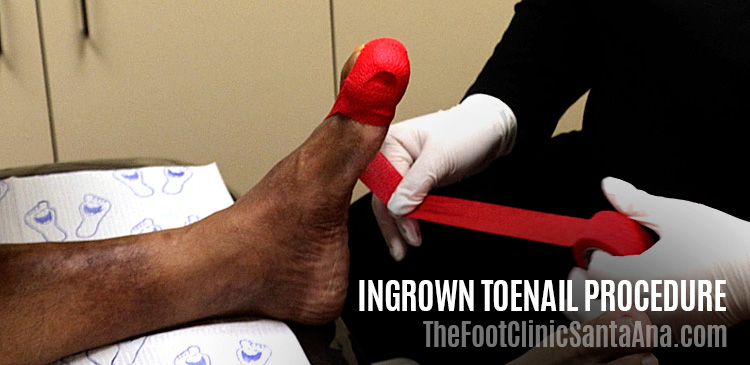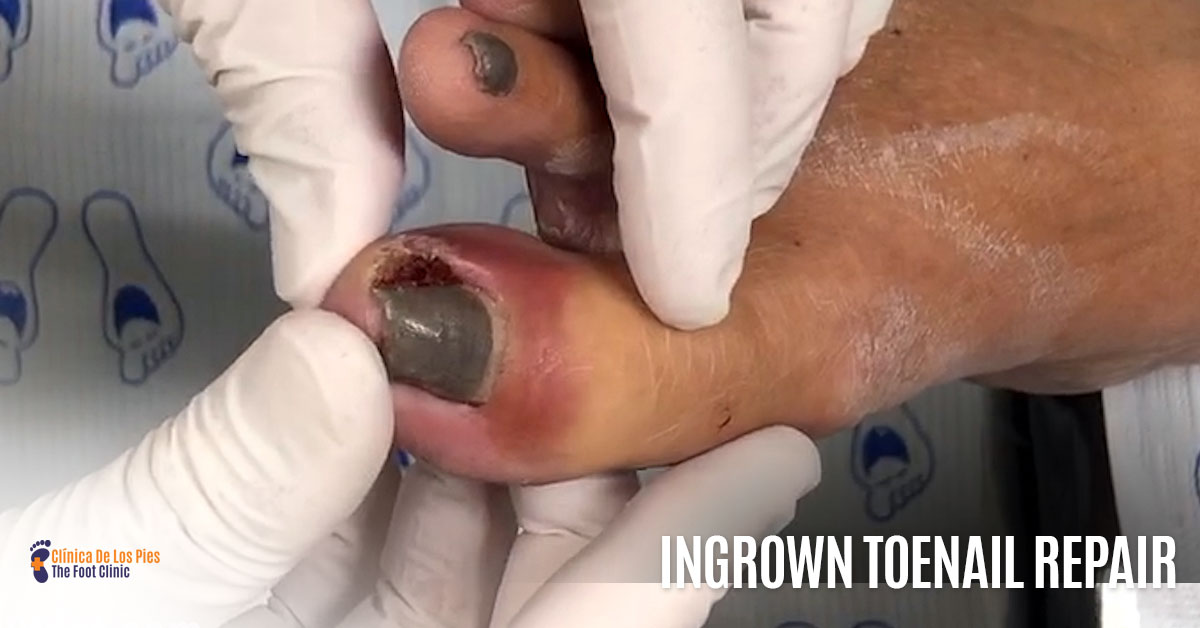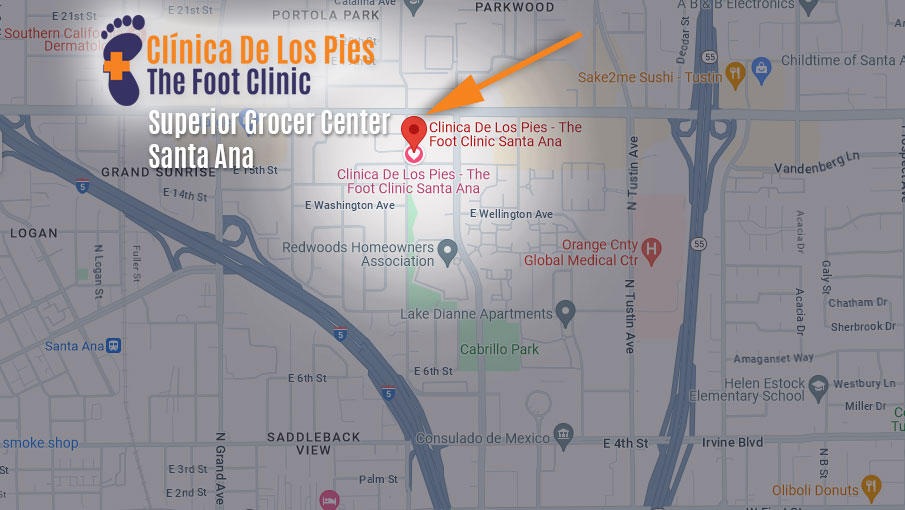INGROWN TOENAIL REPAIR
WHAT ARE INGROWN TOENAILS?
Ingrown nails, the most common nail impairment, are nails whose corners or sides dig painfully into the soft tissue of nail grooves, often leading to irritation, redness, and swelling. If you think you may need an ingrown toenail surgery and you are in Santa Ana, Tustin, Costa Mesa, Anaheim, Garden Grove or Irvine areas, or within Orange County, we can help you. Is the side of your toenail swollen, red or infected?
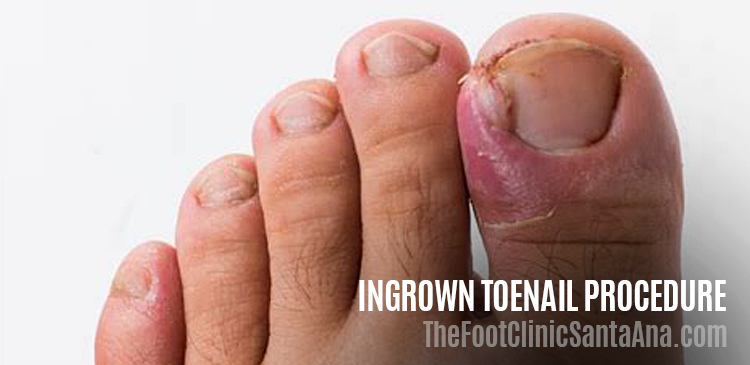
Usually, toenails grow straight out. Sometimes, however, one or both corners or sides curve and grow into the flesh. The big toe is the most common location for this condition, but other toes can also become affected.
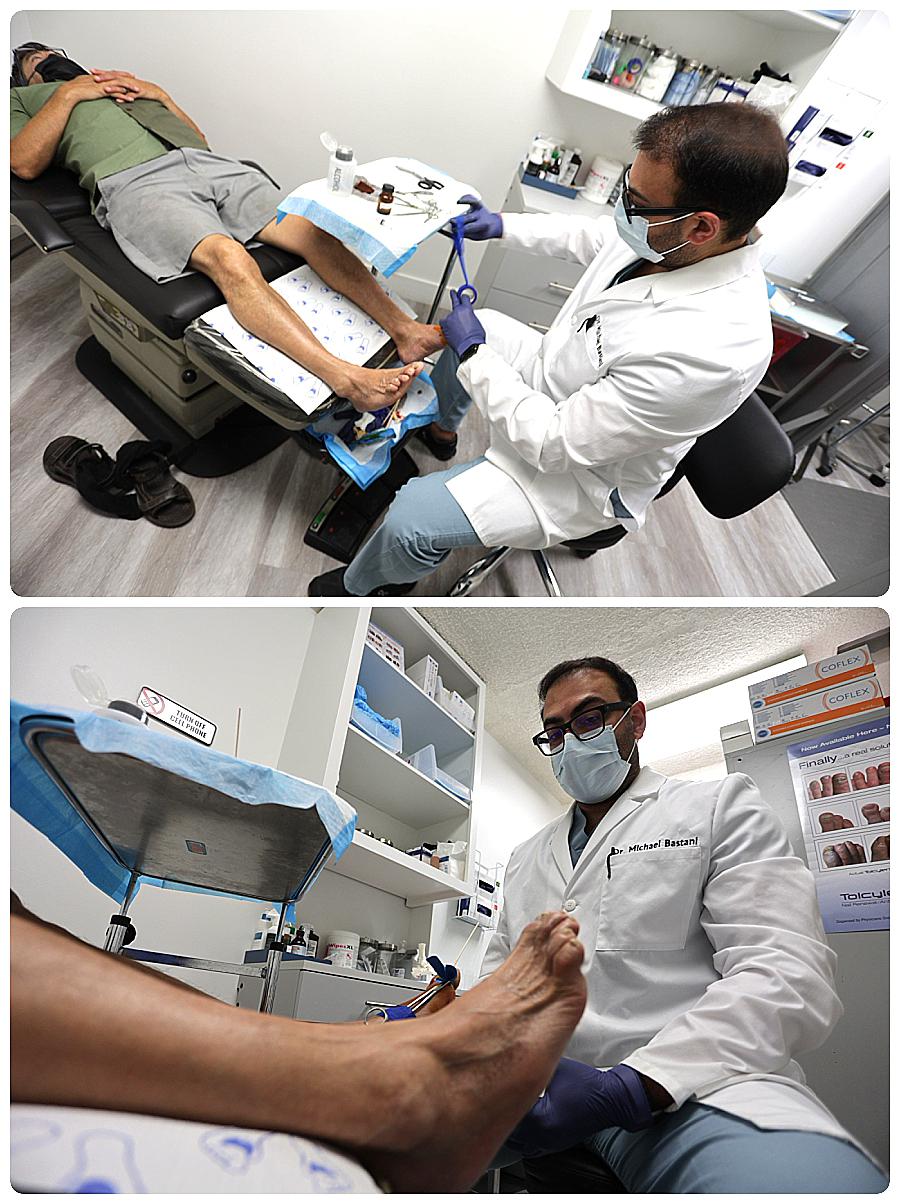

Symptoms
The following symptoms may be present with ingrown toenails:
- Pain
- Redness and swelling
- Drainage
- Odor
- Prominent skin tissue (bulged skin around the painful area)

Home Treatment
If you suspect an infection due to an ingrown toenail, immerse the foot in a warm salt water soak, or a basin of soapy water, then apply an antiseptic and bandage the area.
People with diabetes, peripheral vascular disease, or other circulatory disorders must avoid any form of self-treatment and seek podiatric medical care as soon as possible.
Other “do-it-yourself” treatments, including any attempt to remove any part of an infected nail or the use of over-the-counter medications, should be avoided. Nail problems should be evaluated and treated by your podiatrist, who can diagnose the ailment, and then prescribe medication or another appropriate treatment.

Causes
Ingrown toenails may be caused by one or more of the following:
- Improperly trimming of your nails (Trimming Toenails too closely)
- Your Heredity
- Shoe pressure and the crowding of your toes
- Repeated trauma to the feet from normal activities
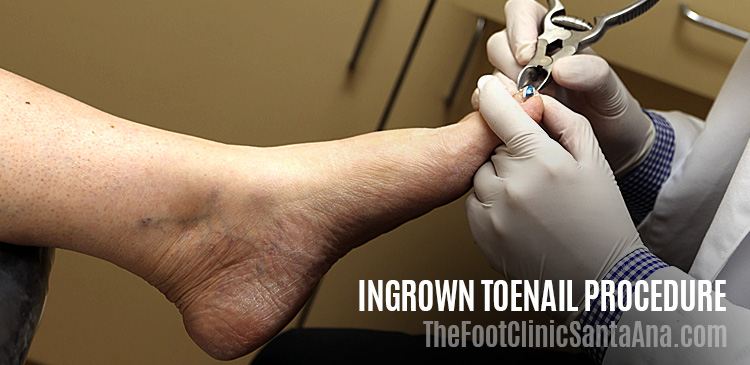
When to Visit a Podiatrist
You should see a podiatrist immediately if any drainage or excessive redness is present around the toenail. Also, if a short trial of home treatment has not resulted in improvement of the condition, see your podiatrist. If you have diabetes or poor circulation, you should seek immediate treatment at the first signs of an ingrown toenail, as it can lead to more severe complications.
Diagnosis and Treatment
A podiatrist will remove the ingrown portion of the nail and may prescribe a topical or oral medication to treat the infection. If ingrown nails are a chronic problem, your podiatrist can perform a procedure to permanently prevent ingrown nails. The corner of the nail that ingrows, along with the matrix or root of that piece of nail, are removed by use of a chemical, a laser, or other methods.
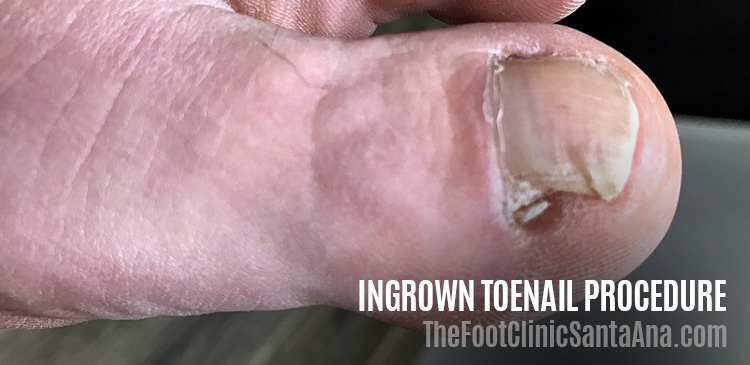
Recurring Ingrown Nail (As seen above)
- Sometimes takes more than once to remove a, “difficult to remove” nail.
- In this case, a small lower corner of the nail bed has continued to come back and a new procedure was required to remove the small piece.
Prevention
- Trim toenails properly: cut them straight across, not longer than the tip of the toes. Do not dig into corners and only gently round off corners with a nail file. Use toenail clippers.
- Avoid shoes with pointy or narrow toe boxes.
- Never rip or tear edges of nails.
Additional Causes of Ingrown toenails include:
- Trauma. Sometimes an ingrown toenail is the result of trauma, such as stubbing your toe, having an object fall on your toe, or engaging in activities that involve repeated pressure on the toes, such as kicking or running.
- Improper trimming. The most common cause of ingrown toenails is cutting your nails too short. This encourages the skin next to the nail to fold over the nail.
- Improperly sized footwear. Ingrown toenails can result from wearing socks and shoes that are tight or short.
- Nail Conditions. Ingrown toenails can be caused by nail problems, such as fungal infections or losing a nail due to trauma.

Home care:
If you don’t have an infection or any of the above medical conditions, you can soak your foot in room-temperature water (adding Epsom’s salt may be recommended by your doctor), and gently massage the side of the nail fold to help reduce the inflammation.
Avoid attempting “bathroom surgery.” Repeated cutting of the nail can cause the condition to worsen over time. If your symptoms fail to improve, it’s time to see a foot and ankle surgeon.
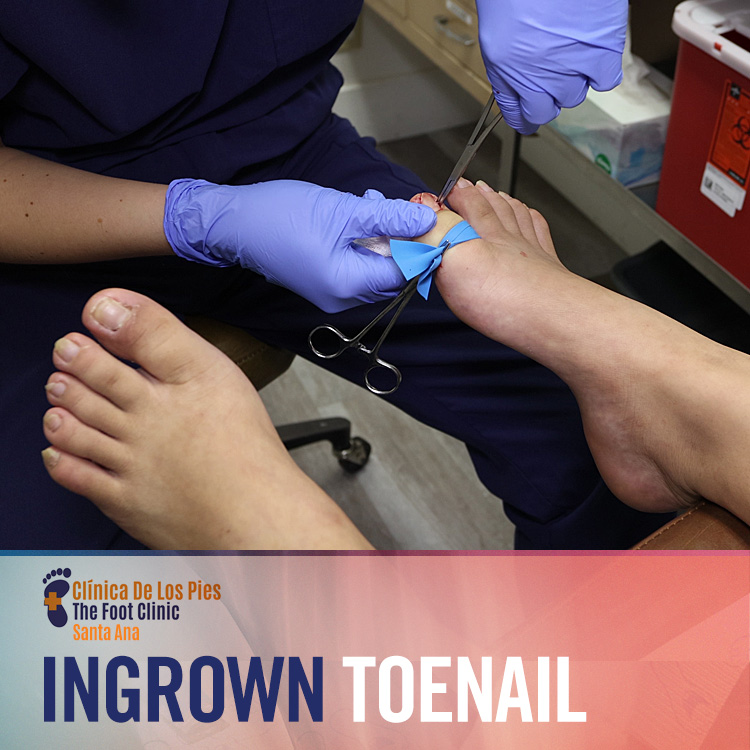
Physician care:
After examining the toe, the foot and ankle surgeon will select the treatment best suited for you. If an infection is present, an oral antibiotic may be prescribed.
Sometimes a minor surgical procedure, often performed in the office, will ease the pain and remove the offending nail. After applying a local anesthetic, the doctor removes part of the nail’s side border. Some nails may become ingrown again, requiring removal of the nail root.
Following the nail procedure, a light bandage will be applied. Most people experience very little pain after surgery and may resume normal activity the next day. If your surgeon has prescribed an oral antibiotic, be sure to take all the medication, even if your symptoms have improved.
